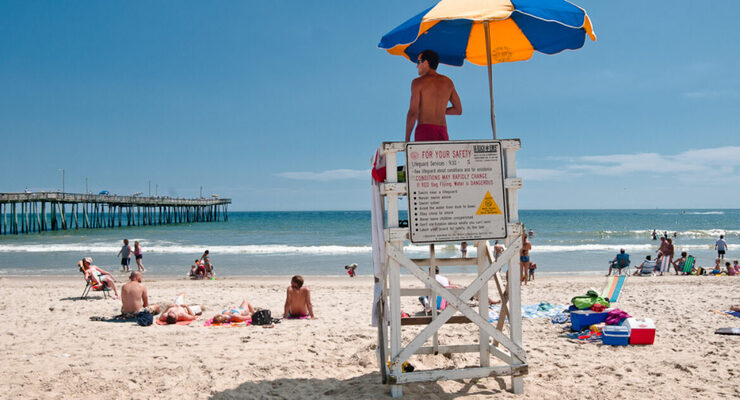
Your family vacation to Virginia Beach doesn’t need to be ruined by safety concerns if you prepare properly. The city’s location on the Atlantic Ocean means visitors should always be aware of changing weather, water conditions, and tides.
Many families overlook simple safety factors during beach planning. Cold water can cause hypothermia, while pollution and runoff can sometimes affect swimming quality. The good news? Basic safety rules like always swimming with a buddy and avoiding the water after dark go a long way toward keeping your family safe. This guide covers essential beach safety, water awareness, and preparation tips before you head to the coast.
How Safe Is Virginia Beach?
Virginia Beach has earned a reputation as a safe destination for families. The community maintains active beach patrols and strong public-safety programs throughout the year.
Even so, visitors should stay alert in crowded areas and remain aware of their surroundings, especially at night or near busy boardwalk sections. Following posted rules and staying within lifeguard-patrolled zones can prevent most issues.
The city’s collaborative approach – law enforcement working alongside residents and visitors – helps maintain a secure and welcoming environment for everyone.
Water Quality and Health Concerns
Beach conditions can change quickly depending on recent weather and runoff. After heavy rain, bacteria levels sometimes rise, which can make swimming unsafe for short periods.
Check local swimming advisories before entering the water. Virginia Beach officials post updates during the main swimming season and will close areas temporarily if conditions aren’t safe.
To protect your health:
- Avoid swimming near storm drains or after large rainfalls.
- Keep open cuts out of the water.
- Shower before and after swimming.
- Stay clear of murky areas and fishing piers.
Families with young children should take extra care, as kids tend to spend more time in shallow water and may accidentally swallow seawater.
Family Safety Planning and Emergency Readiness
Beach safety at Virginia Beach depends on understanding available resources. Lifeguards are stationed along the main beaches during the summer months and can assist in emergencies.
Here are key tips for a safe day at the beach:
- Learn basic swimming and floating skills.
- Stay within sight of a lifeguard and close to shore.
- Watch for colored flags that indicate water conditions.
- If caught in a rip current, swim parallel to the shore until free.
- Enter the water feet-first to avoid neck or spinal injuries.
If a serious accident occurs, seek immediate medical attention. Virginia law generally allows two years to pursue a claim after an injury. ConsumerShield can help visitors and residents understand their rights and connect with experienced personal-injury lawyers in the state.
Teaching children to recognize hazards and know a designated family meeting point can also help avoid confusion during emergencies.
Conclusion
Virginia Beach offers families a fun and relaxing coastal getaway, but preparation ensures it stays that way. Swimming at guarded beaches, checking advisories, and learning rip-current safety can prevent most accidents.
Weather and water quality can change fast on the Atlantic, but with awareness and planning, families can enjoy every part of the coastline safely.
Understanding local safety rules – and knowing where to turn for help if something goes wrong – gives families peace of mind. The more prepared you are, the more time you’ll have to focus on what really matters: creating lasting beach memories together.
















